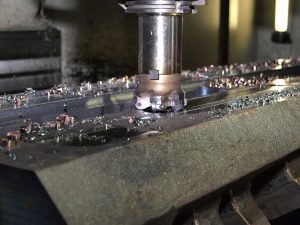
Lathes and milling machines are two essential machines used in the manufacturing industry. While both involve the use of a cutting tool to remove material from a workpiece in the form of swarf (chips), they aren’t necessarily the same. Both lathes and milling machines have their own unique functions and purpose. So, what’s the difference between these two machines exactly?
What Is a Lathe?
A lathe is a large machine resembling a common workbench. Consisting of nearly a dozen different parts — bed, carriage, headstock, tailstock, faceplate, etc. — it’s designed to rotate a workpiece against a single-bladed cutting tool. After the workpiece has mounted on top of the lathe, the lathe turns it against a single-bladed cutting tool. The cutting tool itself remains stationary, but the workpiece rotates against it to remove material.
Lathes can be characterized as either woodworking or metalworking, depending on the material for which they are intended to remove. Woodworking lathes are generally smaller and have fewer parts than their metalworking counterparts, but they both rely on the rotational power of the mounted workpiece to remove material as it’s exposed to a single-bladed cutting tool.
What Is a Milling Machine?
A milling machine is machine used to remove material from a workpiece by feeding the workpiece against a multi-bladed or -pointed cutting tool. Milling machines are taller than lathes, but they also have a shorter length, allowing manufacturing companies to place them in small spaces.
Aside from shape and size, though, the primary difference between lathes and milling machines is their method of operation. With lathes, the workpiece rotates against a stationary cutting tool. With milling machines, a stationary workpiece is exposed to a rotating cutting tool.
Additionally, the cutting tool used in milling machines usually has several blades or points. In comparison, the cutting tool used in lathes usually has a single blade. With multiple blades or points, milling machines are able to grind away material from the workpiece.
Milling processes can be categories as either face or peripheral. Face milling is characterized by a cutting action around the outside of the cutting tool, whereas peripheral milling is characterized by a cutting action across the circumference of the cutting tool.
Both lathes and milling machines are used to remove material from a workpiece. Lathes, however, involve rotating a workpiece against a single-bladed cutting tool, whereas milling machines involve rotating a multi-bladed or -pointed cutting tool against a stationary workpiece.
See Monroe’s Custom Manufacturing Services.
No tags for this post.
